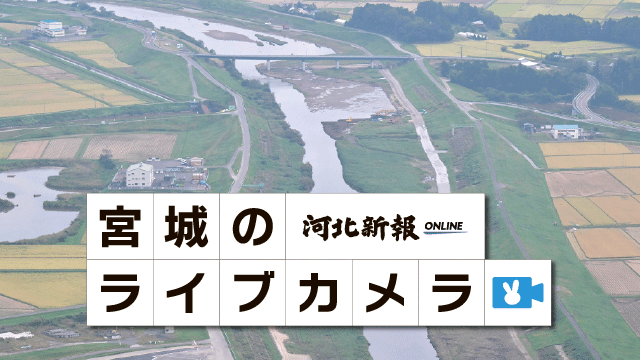Part 10: Tsunami Fires (1) Risks/Raging Flames Approach the School Building



According to the Japan Association for Fire Science and Engineering, at least 159 cases of tsunami fires occurred in the Tohoku region and elsewhere after the tsunami from the Great East Japan Earthquake arrived, burning down around 74 hectares of the urban area. Debris, vehicles, and leaking heavy oil burned, and the flames attacked evacuation buildings. We reflect back on the menace of tsunami fires, and consider the lessons and preparations that should be taken. (“Preserve Lives and Communities” Investigation team)
◎Evacuated residents search for escape plans
A mountain of destroyed houses started to become tinged with crimson, and the flames gradually grew stronger. Around 600 evacuees were trembling at a two-story school building, isolated by the attack of the colossal tsunami.
Nakano Elementary School of Miyagino Ward, Sendai City, is not far from the coast line. On the day of the earthquake, many children and residents gathered at the school. The tsunami washed away residences, and the entrance of the school building was blocked by cars and building material.
Several hours after the earthquake, Hitoshi Suzuki (65), a neighborhood association officer of Gamo who led the evacuation of the residents, was at a classroom on the second floor. The classrooms, allocated by neighborhood, were overflowing with residents. All were battling the cold and their drowsiness.
After 8 p.m., Suzuki saw a fire in the darkness around 300 meters west of the school. “I could barely see the flames between the gaps of the collapsed houses, but they were fanned by the west wind and gradually became stronger.” The sound of vehicles and gas cylinders catching fire echoed throughout the area.
Suzuki repeatedly checked the outside conditions from the home economics classroom on the western side of the school building. “It was frightening as it was a midnight fire, and I couldn’t grasp how far away it was,” he remembers.
According to the city fire department, four cases of tsunami fires occurred in the school district on March 11, 2011 = see map =. The three fires on the west side of the school building ended up devouring more than 100 cars and around 20 buildings.
Kerosene and gas cylinders were stored immediately west of the school building. Masayuki Shimoyama (45), a long-time PTA member, felt a sense of danger. “They would ignite if the fire approaches. We need to think of a way to escape.”
Building material and furniture were stacked up to adult height on the first floor of the school, obstructing the way. A majority of the evacuating residents were children or the elderly, so with the blockage, it would be difficult for everyone to escape. With the help of men in work uniforms who happened to be present, the debris was removed by hand. In around an hour, they were able to open a passage large enough to fit one adult.
They gained their escape route at midnight, and by that time, aerial firefighting by the city fire department helicopters had become fully mobilized. The force of the flames gradually grew weaker, and the Self-Defense Force helicopters also began rescuing the sick.
The fire finally settled around 200 meters away from the school on the morning of the 12th. Houses and debris, washed up by the tsunami, were stacked around the school building. The residents were saved, but they had been dangerously close to the risk of spreading fire.
◎Sturdy buildings also catch fire / Flames spread from washed-up debris
The Great East Japan Earthquake left many tsunami evacuation buildings exposed to devastating tsunami fires, including Nakano Elementary at Miyagino Ward, Sendai City. Experts point out the dangers carried by strong buildings.
Based on research by the Japan Association for Fire Science and Engineering, 59 cases out of 159 tsunami fires during the disaster were building fires. 23 of the 34 cases in which building structure and material could be recognized were non-wooden buildings, using steel reinforcements and steel frames. This is twice the number of the 11 cases of wooden structures.
Associate Professor Yu Hiroi of the Nagoya University Disaster Mitigation Coordinated Research Center (urban disaster prevention), who went to the site of the fire to investigate, analyzes the characteristics of building fires involving steel reinforcements and frames. “Residences and automobiles were stopped by buildings that remained standing after the tsunami, and caught on fire for some reason, spreading the flames.”
One site that represents the pattern of tsunami fire outbreaks is Kadonowaki Elementary of Ishinomaki City, which stood at a location that directly faced the tsunami. Immediately after the earthquake, Kiyoshi Abe (64), who managed a machine equipment manufacturing plant near the school, ran into the school building under chase from the tsunami, and went up to the roof of the three-story building.
Bang, bang. Loud noises echoed, and Abe leaned over the edge to look below. Something was starting to burn at two areas in front of the school building, and cars that were washed up against the building by the tsunami started exploding, one by one. Pillars of fire rose right before his eyes.
Around 50 residents escaped to the eaves from the second-floor window. They then lay a podium across to the slope of Hiyoriyama Mountain behind the school, and continued their evacuation. When Abe returned to the school afterwards, he found the school building burned black, along with multiple cars stacked on top of each other. “Things would have been dangerous if we had remained in the building.”
Even under investigation from the Japan Association for Fire Science and Engineering, the cause of the tsunami fires has not been fully clarified. There is a high possibility that sparks that were discharged for an unidentified reason lit inflammable gas, such as gasoline and propane gas which leaked from cars and evaporated, on fire. Kesennuma Harbor burned from heavy fuel that floated on the surface of the ocean water, becoming a literal sea of fire.
In an experiment by the Sendai City fire department, a fire broke out from electric wiring in a car immersed in seawater. It looks like cars could be seen as one cause of fire.
The danger of tsunami fires is not limited to places with heavy oil tanks nearby. It also lies in urban areas with a large number of propane gas tanks or cars.
Dr. Hiroi points out, “Before worrying about tsunami fires, it is important to first evacuate safely to higher ground.” Based on this premise, he further calls for the following measures to be taken, regarding tsunami evacuation buildings located in areas that carry risks of tsunami fires: (1) Raise the foundation to prevent inflammable material from nearing during a tsunami fire, (2) Prepare a secondary evacuation site on high ground or at annexes behind buildings, and (3) Enhance the fire-resistance of the building itself.
Translated by Anna Wada
July 11, 2014 (Fri.)
[Japanese] http://www.kahoku.co.jp/special/spe1114/20140711_01.html
みやぎ地域安全情報
宮城県警 みやぎセキュリティメールより
- 女性に対する不審者事案の発生【山元町】
- 特殊詐欺の予兆電話について(黒川郡大和町)
- 女性に対する盗撮事案の発生【青葉区】
- 女性に対するつきまとい事案の発生【大崎市】
- 特殊詐欺の予兆電話について(気仙沼市)
- オレオレ詐欺の特殊詐欺注意報(仙台市泉区)
- 刃物ようのものを持った男の目撃情報について(大崎市)
- オレオレ詐欺の特殊詐欺注意報(仙台市宮城野区)
- 特殊詐欺の予兆電話について(松島町)
- オレオレ詐欺の特殊詐欺注意報(仙台市太白区)
- オレオレ詐欺の特殊詐欺注意報(石巻市)
- 特殊詐欺の予兆電話について(蔵王町)
- 不審電話について(黒川郡大衡村)
- オレオレ詐欺の特殊詐欺注意報(登米市)
- オレオレ詐欺の特殊詐欺注意報(石巻市)
- 特殊詐欺の予兆電話について(仙台市泉区)
- 特殊詐欺の予兆電話について(加美郡加美町)
- オレオレ詐欺の特殊詐欺注意報(仙台市宮城野区)
- 特殊詐欺の予兆電話について(大崎市)
- オレオレ詐欺の特殊詐欺注意報(亘理郡亘理町)
- 女性に対するつきまとい事案の発生【大和町】
- 特殊詐欺の予兆電話について(仙台市泉区)
 朝刊・夕刊
朝刊・夕刊 記事を探す
記事を探す FAQ
FAQ







